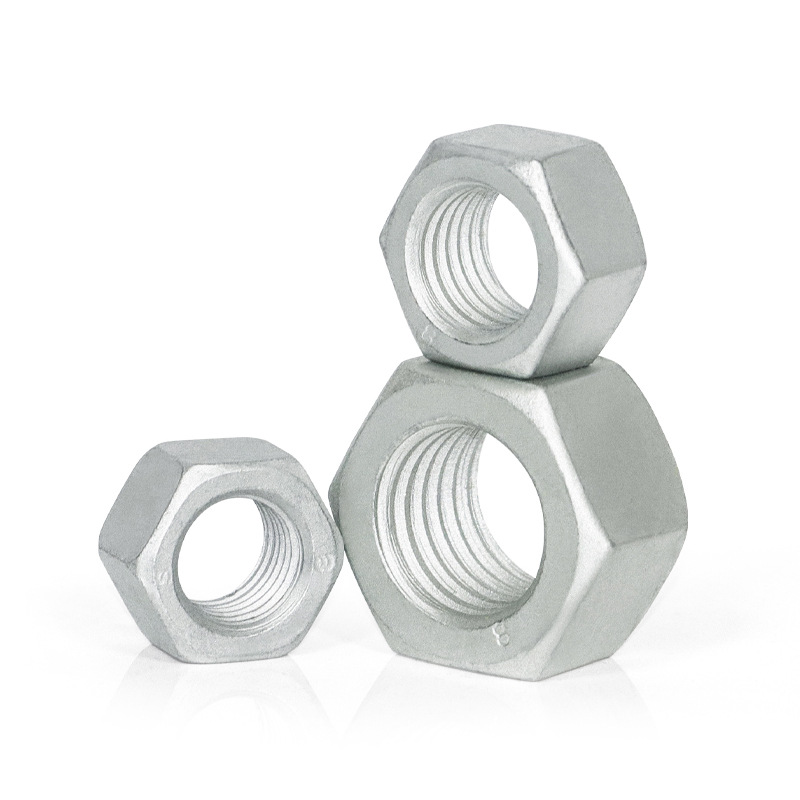

ASTM A36 Specifications for High-Strength Anchor Bolts in Construction Applications
Nov . 10, 2024 10:25 Back to list
ASTM A36 Specifications for High-Strength Anchor Bolts in Construction Applications
Understanding ASTM A36 Anchor Bolts Specifications and Applications
Anchor bolts play a crucial role in construction and structural engineering, providing the necessary support to secure structures to their foundations. Among the various materials used for anchor bolts, ASTM A36 has emerged as a popular choice due to its favorable mechanical properties, availability, and cost-effectiveness. This article delves into the specifications, benefits, and applications of ASTM A36 anchor bolts, equipping professionals and students alike with a comprehensive understanding of this essential construction component.
What is ASTM A36?
ASTM A36 is a standard specification developed by ASTM International, which outlines the requirements for carbon structural steel found in structural steel fabrication. This standard has gained wide acceptance across various industries due to its durability, strength, and versatility. The material is primarily composed of carbon, with low levels of manganese, phosphorus, and sulfur, making it suitable for welding, forming, and machining.
The yield strength of A36 steel typically ranges from 36,000 psi (250 MPa) to 58,000 psi (400 MPa), with a corresponding tensile strength of up to 80,000 psi (550 MPa). These characteristics ensure that A36 anchor bolts can endure significant loads and provide stability for various structures, including bridges, buildings, and heavy machinery.
Specifications of ASTM A36 Anchor Bolts
When dealing with A36 anchor bolts, it's essential to recognize several key specifications that govern their production and use
1. Chemical Composition A36 steel's chemical makeup primarily consists of carbon (max 0.26%), manganese (0.60% to 0.90%), phosphorus (max 0.04%), and sulfur (max 0.05%). These ratios ensure a balance between toughness and ductility, allowing the anchor bolts to withstand various stresses.
2. Mechanical Properties A36 anchor bolts exhibit both yield and tensile strength values that correlate with industry standards. Typically, they are designed to achieve a minimum yield strength of 36,000 psi and a minimum tensile strength of 58,000 psi, ensuring reliability under load.
3. Sizes and Dimensions ASTM A36 anchor bolts come in various sizes and lengths, ranging from small diameters (1/2 inch) to larger ones (up to 2 inches or more), allowing flexibility in design and usage.
4. Coatings To enhance corrosion resistance, A36 anchor bolts may be hot-dip galvanized or coated with other protective layers. This is particularly important for outdoor applications or environments prone to moisture.
astm a36 anchor bolts

Benefits of Using ASTM A36 Anchor Bolts
The choice of ASTM A36 anchor bolts offers numerous advantages
1. Cost-Effectiveness A36 steel is widely available and relatively inexpensive compared to other high-strength materials, making it a practical choice for many construction projects.
2. Versatile Applications Due to its mechanical properties, A36 anchor bolts can be utilized in a wide range of applications, from anchoring machinery to securing steel columns in high-rise buildings.
3. Ease of Fabrication The weldability and machinability of A36 steel make it easier to fabricate anchor bolts in various configurations, enhancing design flexibility.
4. Durability When properly installed and maintained, A36 anchor bolts demonstrate excellent durability, successfully supporting structures through years of service.
Applications of ASTM A36 Anchor Bolts
ASTM A36 anchor bolts find their applications in numerous fields, including
- Construction Securing structural steel elements to concrete foundations in residential, commercial, and industrial buildings. - Bridges Anchoring bridge girders and providing stability against dynamic loads. - Heavy Equipment Used in machinery foundations to absorb vibrations and secure heavy equipment in place. - Wind Turbines Supporting turbine towers which require robust anchoring systems to withstand extreme weather conditions.
In conclusion, ASTM A36 anchor bolts serve an essential function in ensuring the stability and safety of various structures. Their favorable properties, coupled with cost-effectiveness and versatility, make them a preferred choice for engineers and builders across many industries. Understanding the specifications and applications of A36 anchor bolts allows professionals to make informed decisions, ultimately contributing to successful construction projects.
Latest news
-
High-Strength Hot Dip Galvanized Bolts - Hebei Longze | Corrosion Resistance, Customization
NewsJul.30,2025
-
Hot Dip Galvanized Bolts-Hebei Longze|Corrosion Resistance&High Strength
NewsJul.30,2025
-
High-Strength Hot-Dip Galvanized Bolts-Hebei Longze|Corrosion Resistance&High Strength
NewsJul.30,2025
-
Hot Dip Galvanized Bolts-Hebei Longze|Corrosion Resistance&High Strength
NewsJul.30,2025
-
Hot Dip Galvanized Bolts - Hebei Longze | Corrosion Resistance, High Strength
NewsJul.30,2025
-
High-Strength Hot Dip Galvanized Bolts-Hebei Longze|Corrosion Resistance, Grade 8.8
NewsJul.30,2025

